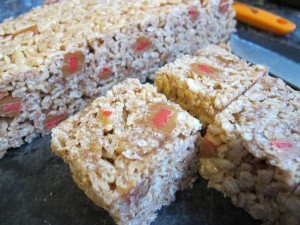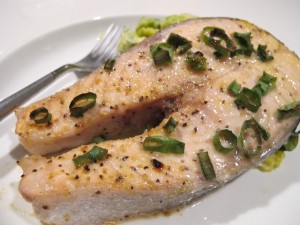The Cardoon as Femme Fatale
I have never seen a cardoon so beautiful as the one depicted in Juan Sánchez Cotán’s “Still Life with Game Fowl, Vegetables and Fruits.” (c. 1602) The rustic, stalky vegetable reclines itself in a sultry manner along a window ledge, naked against an ink black background. It is an intense, stark naturalism that draws the viewer closer into an almost uncomfortable intimacy. Root end thrust aggressively into the foreground, dirtied stalks harsh in the white light, Sánchez Cotán’s cardoon is reminiscent of a 1950s femme fatale.
“Still Life with Game Fowl, Vegetables and Fruits” is a perfect example of bodegón, a Spanish still life derived from the term bodega, i.e pantry or kitchen. Works of this style focus on unplated, unprepared fruits, vegetables or baked goods, with zero or limited inclusion of human artifacts. These raw foods are set against an dark background, “enabling sensations of spatial timelessness to intersect with the contradictory impressions of temporal brevity.”1 Such portraiture is meant to convey a transience of beauty and a “notion of perishability.” The bodegón is humility.
Now, contrast Sánchez Cotán’s cardoon to Abraham van Beyeren’s languid lobster in “Banquet Still Life with a Mouse.” (c. 1660) Van Beyeren was a Dutch painter best known for his lavish displays of sumptuous feasts replete with fine china and delectable tidbits. Unlike the stark cardoon, Van Beyeren’s lobster sprawls atop rich table linens, bathed in soft, gentle light. Additionally, while Sánchez Cotán portrays his cardoon with three suspended lemons and a selection of dead fowl, Van Beyeren surrounds his lobster with shelled oysters; a half-peeled, seemingly discarded lemon; and two goblets of wine.
On the surface, it would appear as though the two artists are engaging in predictable rich-kid/poor-kid behavior. However, Van Beyeren in fact was practicing vanitas, a symbolic style of painting that actually strived to convey a fatalistic point of view and the futility of pleasure. Closer inspection of paintings typical of this genre often reveal skulls or rotting fruit, illustrating the transience of life. Consider the painting above, “Banquet Still Life with a Mouse.” The over-ripe musk melon can be seen to symbolize the inevitability of aging, while the mouse perched on the silver plate is clearly ready to scamper off with its share of the bountiful meal. The vanitas is luxury, but with a moralistic slant.
Nevertheless, whether it be earthy, raw vegetables or beautifully plated crustaceans, food in either the bodegón or vanitas style is presented as more than just substance. Food becomes a vehicle of morality. Chew on that the next time you reach for a Big Mac.
1. Spanish Painting from El Greco to Picasso: Time, Truth and History. Guggenheim Museum Exhibition, November 17, 2006-March 28, 2007.





Recent Comments